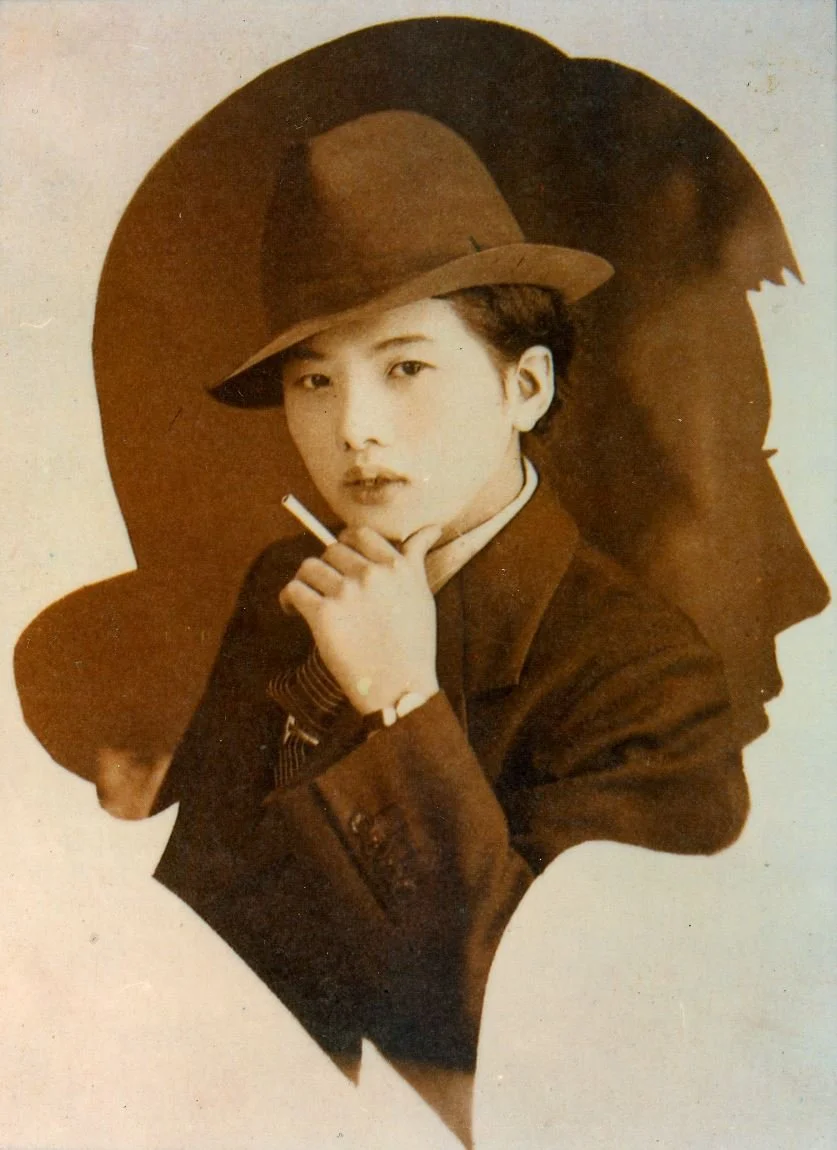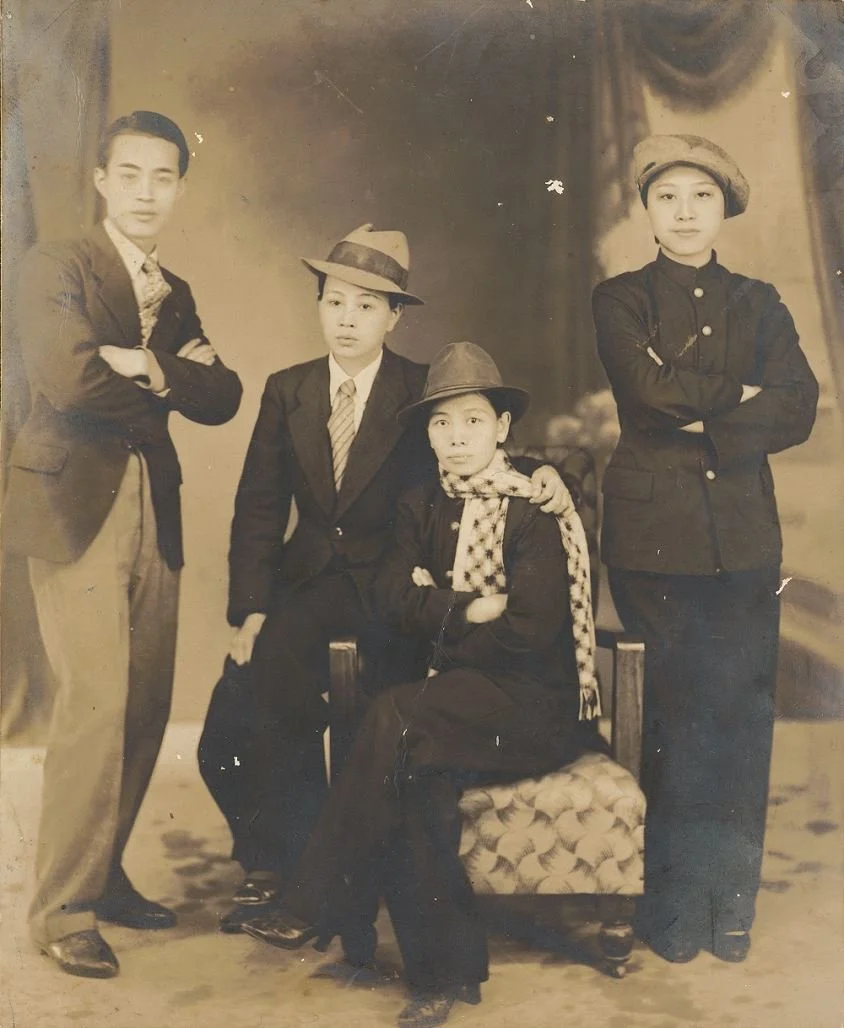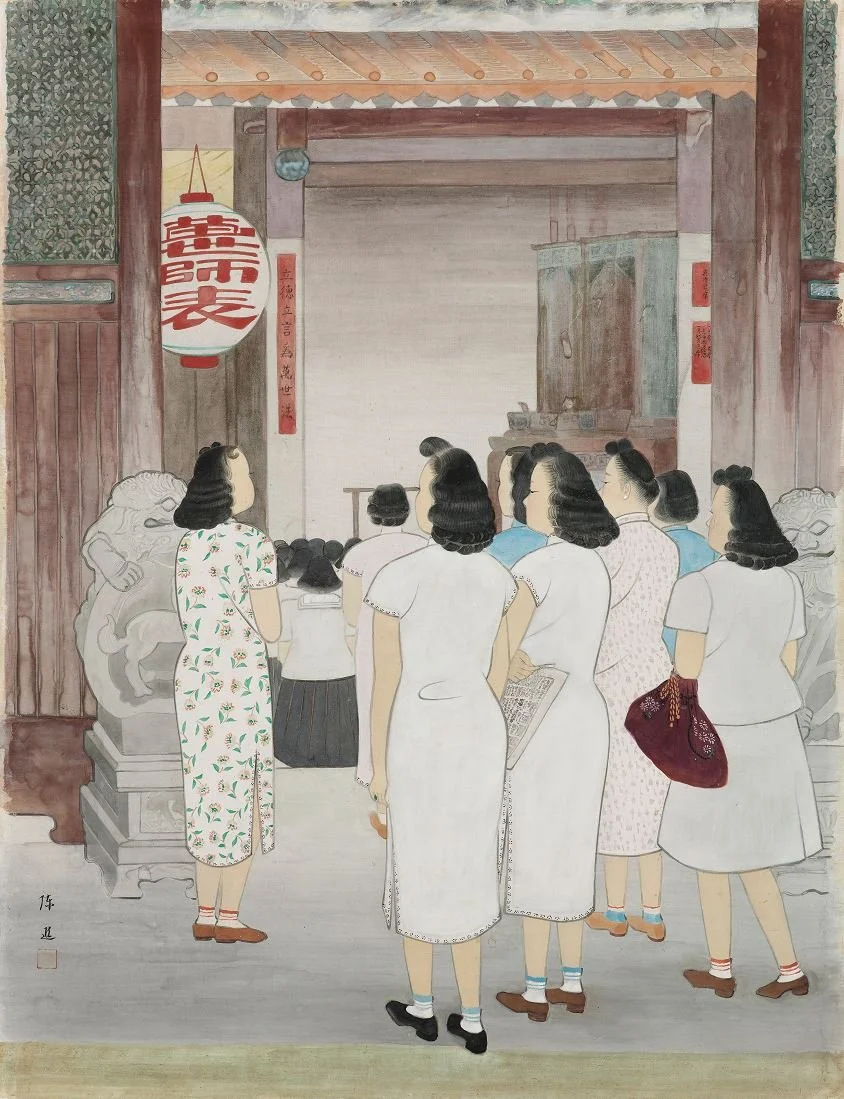Gazing at Femininity and Modernity in 20th-century Taiwan
Inside the exhibition ‘A Gentle Breeze' at the National Centre of Photography and Images
TAIPEI, Taiwan — In January, a photography exhibition titled A Gentle Breeze: Aura and Inspiration in Photography and Literature opened at the National Centre of Photography and Images (NCPI). Curated by Tsai Wen-Shiang, A Gentle Breeze dives into the centre’s archive, displaying a wide selection of historic images that bear witness to Taiwan’s transition to modernity in the first half of the 20th century.
Photography emerged in Taiwan during the Japanese Colonial Period, and photography studios thrived in post 1920s as commercial portraiture became popular among high-status people.
As soon as visitor enters the exhibition, one is surrounded by nostalgic photos in black and white or sepia tone. These images are mainly portraits, be it individual or collective. Each of them testifies to this precious moment of encounter between the sitter and the camera whose lens could turn an instant to beyond a lifetime.
Lin Shou-Yi, Inseparable as Form and Shadow (1943)
Courtesy of Taipei National Centre of Photography and Images
Historic photographs also prove to be an excellent source for understanding the fashion of the epoch. In these images, we could see that while some women are dressed up in Kimonos (traditional Japanese robes), the rest of them are seen in an eclectic style, mixing traditional Han upper garment with Western influenced trousers and leather shoes.
This writer was surprised to discover that in many of these portraits, lady cross-dressed as men! What is curious though, is that all of these portraits look somewhat similar; the lady often carries a coat that drapes gracefully over her left arm, while her right hand would be holding onto a cigarette. The recurring outfits and accessories, such as the hat, suit, ties, wristwatch and cigarette, would’ve been studio props lent to the sitter, hence explaining the similarities shared by these different portraits.
At the time, it was fashionable for girlfriends to visit the studio and have their portraits taken. In one example, we even see a woman, together with her girlfriend who’s cross-dressed as man, taking what looks like a pre-wedding photo, just for the fun of it!
Photographer Unknown, Lin Shou-Yi and Cross-Dressing Female Friends (1940–49)
Courtesy of Taipei National Centre of Photography and Images
These valuable photographs shed light on the liberation and the rise of women in early 20th-century Taiwan. On top of that, they vividly recall Swiss photographer Robert Frank who once remarked that ‘humanity of the moment’ is the one thing that photograph must contain.
I was particularly attracted to a pair of photograph exhibited in the section “The Iteration of Gaze”, in which a black and white photograph is juxtaposed with the same photo but in colour. Dated around 1960–1969, this set of photographs, titled A Beautiful SaySiyat Girl, was taken by Li Cheng-Ji.
What’s captivating about this set is that the one in colour was actually achieved through tinting or hand-colouring. I was intrigued by the level of detail that was put into colouring the visage, and how the subtle gradation of colour gave flesh and blood to the sitter. As someone who once had the opportunity to try photo-tinting, I have to say the ability to colour a photo to that level of realism requires more than just knowing how to paint well.
Li Cheng-Ji, A Beautiful SaySiyat Girl (1960–69)
As the exhibition’s subtitle suggests, literature plays an important role in this photography exhibition. According to Tsai, when looking in retrospect, it has become clear that the emergence of photography not only served the purpose of documentation, but influenced the world of literature, providing ‘perspectives of the lens’ to both writers and storytellers.
Inside the room dedicated to the theme “Between Light and Rhyme”, we see an amalgamation of the two disciplines, namely photography and literature. For this exhibition, five contemporary writers have been invited to look through the photographs in the archive and interpret them in writing. By complementing historic photograph with contemporary writing, a dialogue between the past and present, as well as that between image and text, is created. Could literature, as Tsai has suggested, possibly be a form of photography too?
Poetry juxtaposes with photography in the section “Between Light and Rhyme”
‘New Women’ is a recurrent theme throughout the exhibition. Under the Japanese rule, women in Taiwan were not only freed from the restriction caused by foot-binding, but were even allowed to receive education. Awakened from the old ways of thinking, women started to step outside their house. Dressed up in trendy qipao tailored to accentuate the wearer’s physique, everything from head to toe reflects the new values that they then live by.
Towards the end of the exhibition, I came across my favourite image among the photographs on display — a painting by Chen Chin, one of the most prominent female painters in 20th-century Taiwan. Titled Confucian Temple, this painting in Nihonga (Japanese style) captures the very essence of what this exhibition has been trying to convey through NCPI’s archives.
Chen Chin, Confucian Temple (1936)
Collection of the Ministry of Collection
In Confucian Temple, we see a group of woman standing outside the temple’s entrance, with their back facing the viewers. Their curly hair, fashionable qipao and western influenced leather shoes are all indicators of the New Women at the time.
The temple, a symbol of traditional beliefs rooted in Taiwanese culture, opens up its door, as if welcoming these New Women, alongside this new wave of ideas and values, with open arms. After all, culture is, according to Jawaharlal Nehru (the first prime minister of India), “the widening of the mind and of the spirit”.
The exhibition A Gentle Breeze: Aura and Inspiration in Photography and Literature was on view at the Taipei National Centre of Photography and Images from 2022.01.20 through 2022.05.01.






